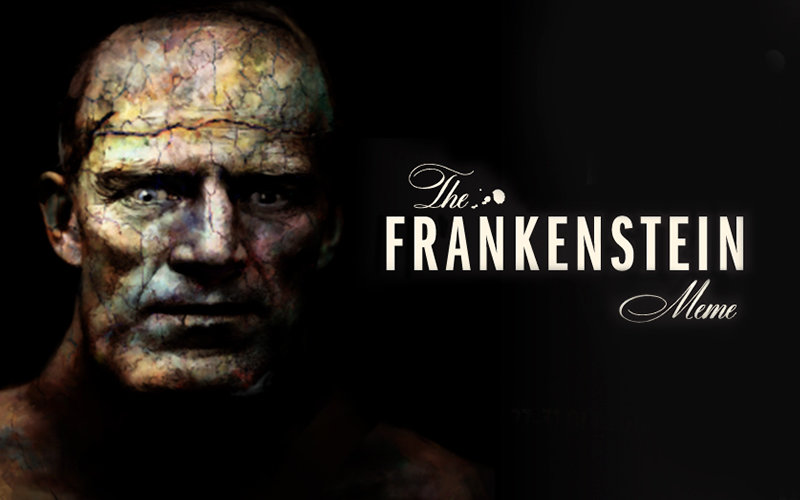
Jesse Pak jumped into the world of “Frankenstein” by recreating a pivotal moment in the creation of Dr. Frankenstein’s creature. Encouraged by professor of art Cliff Cramp to be part of a campuswide project celebrating the 200th anniversary of the novel’s publication, the graduate student used digital paint to create his piece — with one caveat.
“I personally love to hand-paint each mark that goes on the paper to get a looser, painterly feel to the piece,” says Pak, who is pursuing an M.F.A. in art-illustration. “I used colors heavily to give an impression of the feeling, rather than going ‘full realism.’”
Pak is just one of many students whose work will be seen beginning Oct. 27 as part of an international commemoration of the 200th anniversary of “Frankenstein; or, the Modern Prometheus.” Cal State Fullerton is joining universities and institutions around the world to honor the lasting influence of author Mary Shelley and her novel’s impact on literature and other genres.
Cramp’s art students created works inspired by the novel for the “Frankenstein Meme” exhibit, an art show and Special Collections display drawn from the Pollak Library’s famous science fiction holdings. The “narrative quality” of the exhibit, says Pak, “is a great opportunity to bring out a lot of creativity among many artists like myself at CSUF.”
The exhibit was curated by Cramp; Patricia Prestinary, Special Collections librarian; and David Sandner, professor of English, comparative literature and linguistics.
Sandner spent more than two years working with students from his English 457: Romantic Movement and English 370: Horror Literature classes to create the “digital heart” of The Frankenstein Meme Database, a searchable archive to study the literary influence of Mary Shelley’s classic over the past two centuries. Students read nearly 400 works related to the novel and used keywords in the openly available resource to allow searches into how other works and interpretations have responded to “Frankenstein.”
“Through the database, we get to see the evolution of things like the iconic ‘mad scientist’ or the ‘sympathetic monster,’ both original creations of her work. But much more is available for research via the database, from when Mary Shelley appears as a character to the evolution of the Byronic hero through popular literature,” says Sandner.
The site also includes student writings in a Frankenstein Meme Journal, a Frankenzine of student creative work and interviews with award-winning authors.
Alumna True Fong-Vig ’18 (B.A. English) became involved in the project while an officer in the CSUF Science Fiction and Fantasy Club, and contributed to the Frankenzine and in Dr. Sandner’s Frankenstein Meme project.
“It was amazing to see how ‘Frankenstein’ still looms large in the creations of contemporary science fiction and horror writers 200 years after it was first written,” says Fong-Vig. “Shelley’s novel had such a strong influence on the development of both the horror and science fiction genre as we know them, and it continues to influence great writers to this day, including the students who contributed original works for the Frankenzine.”
Other events in honor of the novel’s 200th anniversary — in Room 130 of the Pollak Library unless otherwise noted — include:
Saturday, Oct. 27
Patrons of the Library Talk: “The Frankenstein Meme Project and the 200th Anniversary of the Publication of Mary Shelley’s ‘Frankenstein’” by David Sandner
3 p.m.
Oct. 27-Dec. 21
Frankenstein Meme Art Show and Special Collections Display
Atrium Gallery of the Pollak Library; opening reception Oct. 27 at 5 p.m.
Monday, Oct. 29
Anniversary Celebration: “Frankenstein” related activities are sponsored by the Science Fiction and Fantasy Club, which later that day will launch a new zine with student work that will be archived on the website. Noon; south entrance of Pollak Library
The Creative Writing Club is hosting a student-focused writing workshop led by alumni Tim Powers and James Blaylock. 5 p.m.
Tuesday, Oct. 30
Rebecca Sheehan, associate professor of cinema and television arts, hosts a screening of the 1931 film classic “Frankenstein” and lectures on the figure of the “double” — an image or manifestation of the self. 5 p.m.
Wednesday, Oct. 31
Frankenreads: As part of an international initiative, faculty, staff and other guests will take turns doing 15-minute readings “Frankenstein; or, the Modern Prometheus” until its completion. 9 a.m.
For information on these and other “Frankenstein” events, visit the exhibit page.